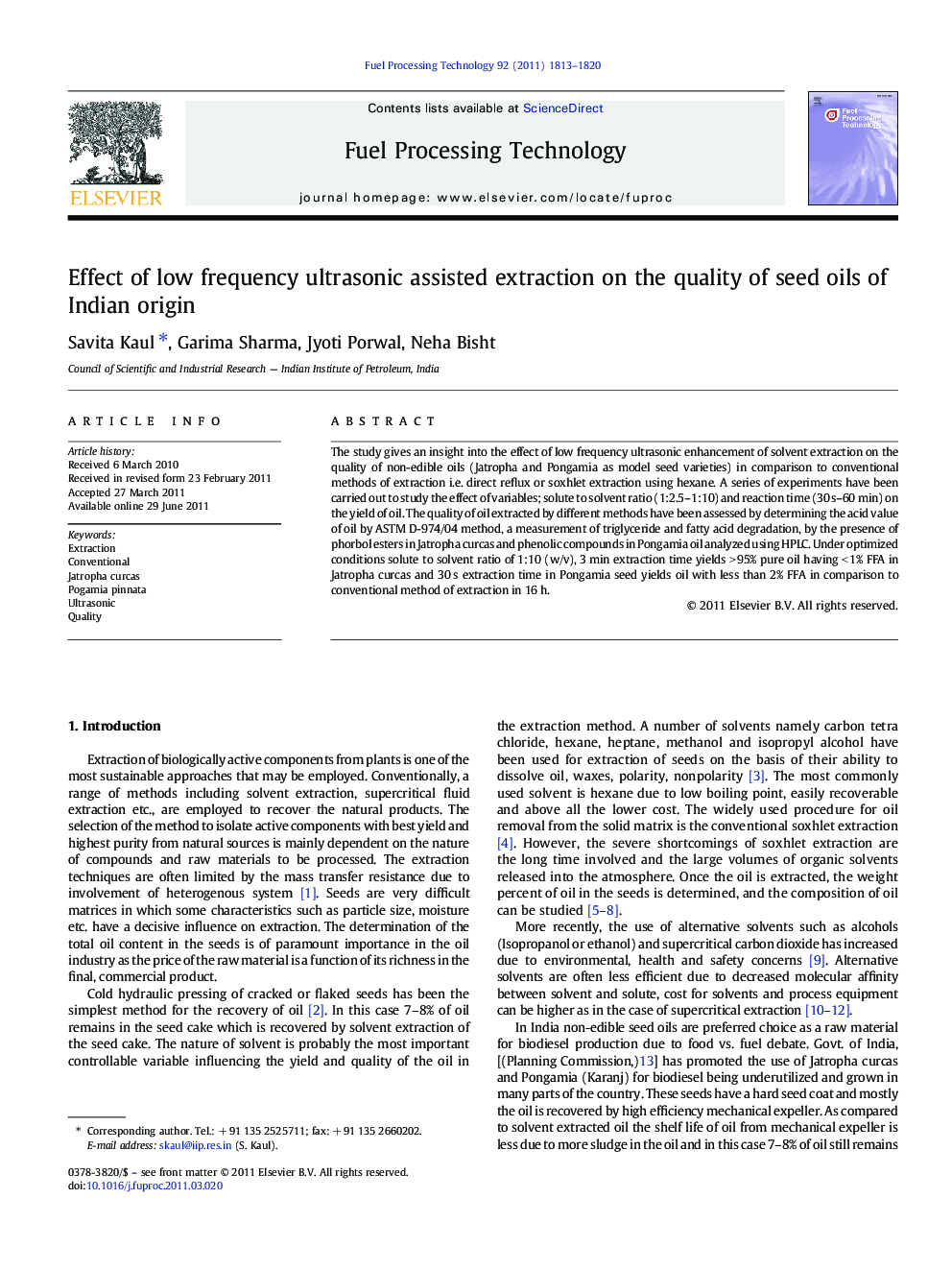| Article ID | Journal | Published Year | Pages | File Type |
|---|---|---|---|---|
| 210558 | Fuel Processing Technology | 2011 | 8 Pages |
The study gives an insight into the effect of low frequency ultrasonic enhancement of solvent extraction on the quality of non-edible oils (Jatropha and Pongamia as model seed varieties) in comparison to conventional methods of extraction i.e. direct reflux or soxhlet extraction using hexane. A series of experiments have been carried out to study the effect of variables; solute to solvent ratio (1:2.5–1:10) and reaction time (30 s–60 min) on the yield of oil. The quality of oil extracted by different methods have been assessed by determining the acid value of oil by ASTM D-974/04 method, a measurement of triglyceride and fatty acid degradation, by the presence of phorbol esters in Jatropha curcas and phenolic compounds in Pongamia oil analyzed using HPLC. Under optimized conditions solute to solvent ratio of 1:10 (w/v), 3 min extraction time yields > 95% pure oil having < 1% FFA in Jatropha curcas and 30 s extraction time in Pongamia seed yields oil with less than 2% FFA in comparison to conventional method of extraction in 16 h.
Research highlights► We compare ultrasonic and conventional methods of extraction for Jatropha and Pongamia seeds for oil recovery. ► Optimized conditions yield > 95% of oil having < 1% FFA in Jatropha curcas and < 2% FFA in Pongamia seed. ► Ultrasonic method takes 30–180 s to yield improved quality oil in comparison to conventional methods of extraction (16 h). ► Ultrasonic method of extraction will certainly increase the shelf life of the seed oil due to low FFA content. ► This method can be extended to other non-edible oils of Indian origin after fine tuning the experimental procedure.
